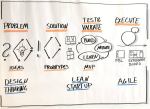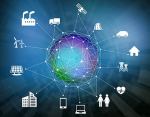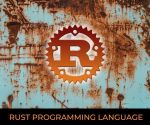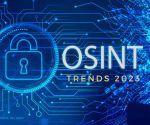“If Data Science is a home for all methods and tools, Data Analytics is a small room in that house”.
Big Data has become a major component in the tech world today thanks to the actionable insights and results businesses can glean. However, the creation of such large datasets also requires understanding and having the proper tools on hand to parse through them to uncover the right information. To better comprehend big data, the fields of data science and analytics have gone from largely being relegated to academia, to instead becoming integral elements of Business Intelligence and big data analytics tools.
However, it can be confusing to differentiate between Data Analytics and Data Science. Despite the two being interconnected, they provide different results and pursue different approaches. If you need to study data your business is producing, it’s vital to grasp what they bring to the table, and how each is unique. To help you optimize your Big Data Analytics, we break down both categories, examine their differences, and reveal the value they deliver.
Data Analytics is a component of Data Science, used to understand what an organization’s data looks like. Generally, the output of Data Analytics are reports and visualizations. Data Science takes the output of analytics to study and solve problems.
The difference between Data Analytics and Data Science is often seen as one of timescale. Data Analytics describes the current or historical state of reality, whereas Data Science uses that data to predict and/or understand the future.
What Is Data Analytics
Data Analytics focuses on processing and performing statistical analysis of existing datasets. Analysts concentrate on creating methods to capture, process, and organize data to uncover actionable insights for current problems, and establishing the best way to present this data. More simply, the field of data and analytics is directed toward solving problems for questions we know we don’t know the answers to. More importantly, it’s based on producing results that can lead to immediate improvements.
What Is Data Science
Data Science is a multidisciplinary field focused on finding actionable insights from large sets of raw and structured data. The field primarily fixates on unearthing answers to the things we don’t know we don’t know. Data Science experts use several different techniques to obtain answers, incorporating computer science, predictive analytics, statistics, and machine learning to parse through massive datasets in an effort to establish solutions to problems that haven’t been thought of yet.
Difference Between Data Analytics And Data Science
While many people use the terms interchangeably, Data Science and Big Data Analytics are unique disciplines (fields), with the major difference being the scope. Data Science is an umbrella term for a group of fields that are used to mine large datasets. Data Analytics software is a more focused version of this and can even be considered part of the larger process. Analytics is devoted to realizing actionable insights that can be applied immediately based on existing queries.
Another significant difference between the two fields is a question of exploration. Data Science isn’t concerned with answering specific queries, instead parsing through massive datasets in sometimes unstructured ways to expose insights. Data analysis works better when it is focused, having questions in mind that need answers based on existing data. Data science produces broader insights that concentrate on which questions should be asked, while big data analytics emphasizes discovering answers to questions being asked.
More importantly, Data Science is more concerned about asking questions than finding specific answers. The field is focused on establishing potential trends based on existing data, as well as realizing better ways to analyze and model data.
The two fields can be considered different sides of the same coin, and their functions are highly interconnected. Data science lays important foundations and parses big datasets to create initial observations, future trends, and potential insights that can be important. This information by itself is useful for some fields, especially modeling, improving machine learning, and enhancing AI algorithms as it can improve how information is sorted and understood. However, data science asks important questions that we were unaware of before while providing little in the way of hard answers. By adding data analytics into the mix, we can turn those things we know we don’t know into actionable insights with practical applications.
Final Thoughts
When thinking of Data Analytics And Data Science it’s important to forget about viewing them as Data Science vs Data Analytics. Instead, we should see them as parts of a whole that are vital to understanding not just the information we have, but how to better analyze and review it.
🅐🅚🅖
Interested in Management, Design or Technology Consulting, contact anil.kg.26@gmail.com
Get updates and news on our social channels!
LATEST POSTS
- A Tale Of Two Frameworks: Spring Boot vs. Django
 “Spring Boot’s convention over configuration approach simplifies development, allowing developers… Read more: A Tale Of Two Frameworks: Spring Boot vs. Django
“Spring Boot’s convention over configuration approach simplifies development, allowing developers… Read more: A Tale Of Two Frameworks: Spring Boot vs. Django - Unleashing The Power Of Django
 “Django, akin to a Swiss Army knife, provides a comprehensive… Read more: Unleashing The Power Of Django
“Django, akin to a Swiss Army knife, provides a comprehensive… Read more: Unleashing The Power Of Django - Potential of Progressive Web Apps (PWAs)
 “PWAs are not just about technology; they are about creating… Read more: Potential of Progressive Web Apps (PWAs)
“PWAs are not just about technology; they are about creating… Read more: Potential of Progressive Web Apps (PWAs) - Unleashing The Power Of Spring Framework
 “Spring Framework simplifies enterprise Java development, but it does so… Read more: Unleashing The Power Of Spring Framework
“Spring Framework simplifies enterprise Java development, but it does so… Read more: Unleashing The Power Of Spring Framework - Key Trends Of OSINT In 2024
 “The future of OSINT lies in our ability to adapt… Read more: Key Trends Of OSINT In 2024
“The future of OSINT lies in our ability to adapt… Read more: Key Trends Of OSINT In 2024 - Can Google’s Carbon Language Replace C++?
 “While Carbon may excel in performance-critical domains, it cannot replace… Read more: Can Google’s Carbon Language Replace C++?
“While Carbon may excel in performance-critical domains, it cannot replace… Read more: Can Google’s Carbon Language Replace C++? - Integration of Design Thinking, Lean, and Agile
 “Innovation thrives when Design Thinking, Lean, and Agile converge, creating… Read more: Integration of Design Thinking, Lean, and Agile
“Innovation thrives when Design Thinking, Lean, and Agile converge, creating… Read more: Integration of Design Thinking, Lean, and Agile - Benefits Of Infrastructure as Code (IaC)
 “Infrastructure as Code is the single most important thing you… Read more: Benefits Of Infrastructure as Code (IaC)
“Infrastructure as Code is the single most important thing you… Read more: Benefits Of Infrastructure as Code (IaC) - Power Of Internet of Everything (IoE)
 “The true power of the Intebrnet of Everything lies not… Read more: Power Of Internet of Everything (IoE)
“The true power of the Intebrnet of Everything lies not… Read more: Power Of Internet of Everything (IoE) - How Is The Enterprise IoT Evolving?
 “IoT is not just about connecting things; it’s about connecting… Read more: How Is The Enterprise IoT Evolving?
“IoT is not just about connecting things; it’s about connecting… Read more: How Is The Enterprise IoT Evolving? - IT Pricing Strategy And Models
 “The art of pricing lies in finding the perfect balance… Read more: IT Pricing Strategy And Models
“The art of pricing lies in finding the perfect balance… Read more: IT Pricing Strategy And Models - What Is SYCL (“sickle”)?
 “SYCL provides a powerful and intuitive programming model that simplifies… Read more: What Is SYCL (“sickle”)?
“SYCL provides a powerful and intuitive programming model that simplifies… Read more: What Is SYCL (“sickle”)? - What Is A Data Lakehouse?
 “With a data lakehouse, organizations can break down data silos,… Read more: What Is A Data Lakehouse?
“With a data lakehouse, organizations can break down data silos,… Read more: What Is A Data Lakehouse? - 5G – The Future Of The Internet
 “5G is the next big step in the evolution of… Read more: 5G – The Future Of The Internet
“5G is the next big step in the evolution of… Read more: 5G – The Future Of The Internet - Ransomware Groups Are Switching To Rust
 “Rust is to Ransomware what a lockpick is to a… Read more: Ransomware Groups Are Switching To Rust
“Rust is to Ransomware what a lockpick is to a… Read more: Ransomware Groups Are Switching To Rust - Streaming Data Pipelines
 “A streaming data pipeline is like a river: it flows… Read more: Streaming Data Pipelines
“A streaming data pipeline is like a river: it flows… Read more: Streaming Data Pipelines - Why Rust Is Best?
 “Rust is a systems programming language that runs blazingly fast,… Read more: Why Rust Is Best?
“Rust is a systems programming language that runs blazingly fast,… Read more: Why Rust Is Best? - Database Sharding Explained
 “Database sharding is like breaking a large puzzle into smaller,… Read more: Database Sharding Explained
“Database sharding is like breaking a large puzzle into smaller,… Read more: Database Sharding Explained - Ambient Computing Will Be The Future Tech
 “Ambient computing creates a seamless technology-rich environment, but challenges in… Read more: Ambient Computing Will Be The Future Tech
“Ambient computing creates a seamless technology-rich environment, but challenges in… Read more: Ambient Computing Will Be The Future Tech - Key Trends Of OSINT In 2023
 “OSINT is not just a technique, it’s a mindset. It’s… Read more: Key Trends Of OSINT In 2023
“OSINT is not just a technique, it’s a mindset. It’s… Read more: Key Trends Of OSINT In 2023

